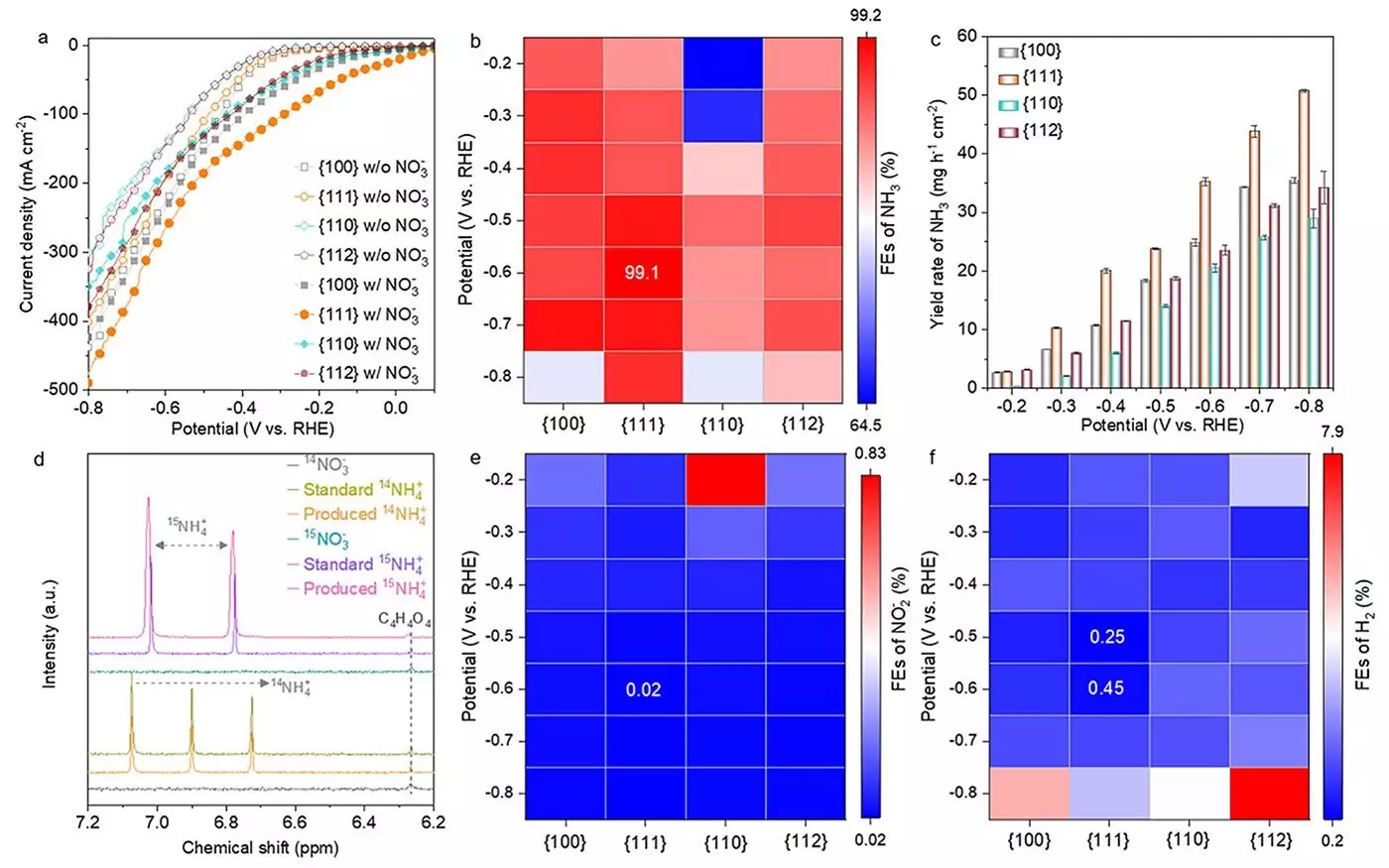Ammonia has long been a cornerstone of global agriculture and industrial processes, largely due to its indispensable role as a fertilizer. However, conventional production methods, primarily the Haber-Bosch process, come with significant drawbacks. This methodology is energy-intensive and generates roughly 1.8% of the world’s CO2 emissions, posing a major challenge in an era increasingly focused on sustainability and reducing carbon footprints. As the global population continues to grow, there is an urgent need to innovate how ammonia is produced, particularly through methods that press promote environmental sustainability and energy efficiency.
Recent advancements in the field of electrochemical reactions have catalyzed fresh approaches to ammonia synthesis, specifically the electrochemical nitrate reduction reaction (eNO3RR). A research team has made remarkable strides in developing catalysts that can facilitate this reaction, potentially transforming nitrate waste into valuable ammonia. Published in the journal ACS Nano, the study highlights the importance of catalysts in driving this reaction economically and efficiently. Focusing on spinel cobalt oxides (Co3O4), the team evaluated the impact of different crystallographic facets on catalyst performance, marking a significant step toward optimizing this process.
The researchers synthesized various nanostructures of Co3O4, targeting specific facets: {100}, {111}, {110}, and {112}. Each facet yields different properties and challenges during the electrochemical process. Among these, the {111} facet emerged as the star performer, exhibiting an extraordinary ammonia Faradaic efficiency of 99.1% and a yield rate of 35.2 mg h-1 cm-2. According to Dr. Heng Liu from Tohoku University, the unique capability of the {111} facet lies in its rapid formation of oxygen vacancies and Co(OH)2, which significantly enhances the substrate’s performance. This shows the potential for designing catalysts specifically tailored for optimal interaction at the atomic level.
Another intriguing finding from the research was the evolution of the Co3O4 catalyst during the reaction. Initially, it transitions from Co3O4 to a state characterized by oxygen vacancies, then to a hybrid structure of Co3O4−x-Ov/Co(OH)2, and ultimately stabilizes as Co(OH)2. This transformation was especially pronounced on the {111} facet and is believed to play a critical role in enhancing the catalyst’s efficiency over time. Understanding these structural changes is essential for future catalyst optimization strategies, allowing scientists to fine-tune not only the materials used but also the reactions they undergo.
The research holds promise beyond just agricultural applications. Ammonia is being explored as a zero-carbon fuel alternative due to its high energy density, clean combustion byproducts, and an already established infrastructure for its storage and transport. The ability to create ammonia from nitrate waste via the eNO3RR process presents an exciting solution to both pollution and energy production challenges. This method embodies the goal of circular economy principles—turning waste into a valuable resource, which aligns well with global efforts aimed at achieving carbon neutrality by the mid-21st century.
As the research team aims to refine their catalysts further, they aim to control the final phases of the transformation to maximize catalytic activity, selectivity, and stability. With the ongoing challenges of climate change and resource management, the quest for innovative, sustainable catalysts such as those studied here is imperative. The outcomes from this breakthrough in Co3O4 catalyst performance not only pave the way for cleaner industrial processes but also enhance our understanding of electrochemical reactions. By advancing the science behind ammonia production, we are embarking on a necessary journey towards sustainable agricultural practices and energy solutions.


Leave a Reply